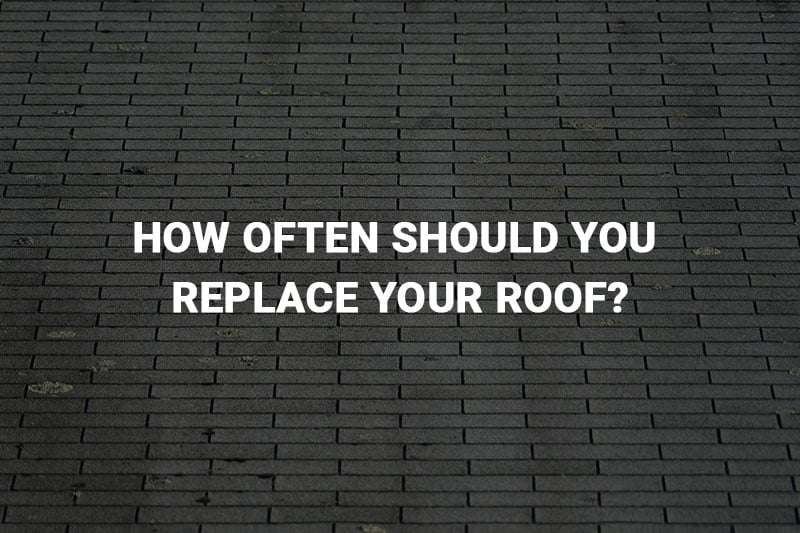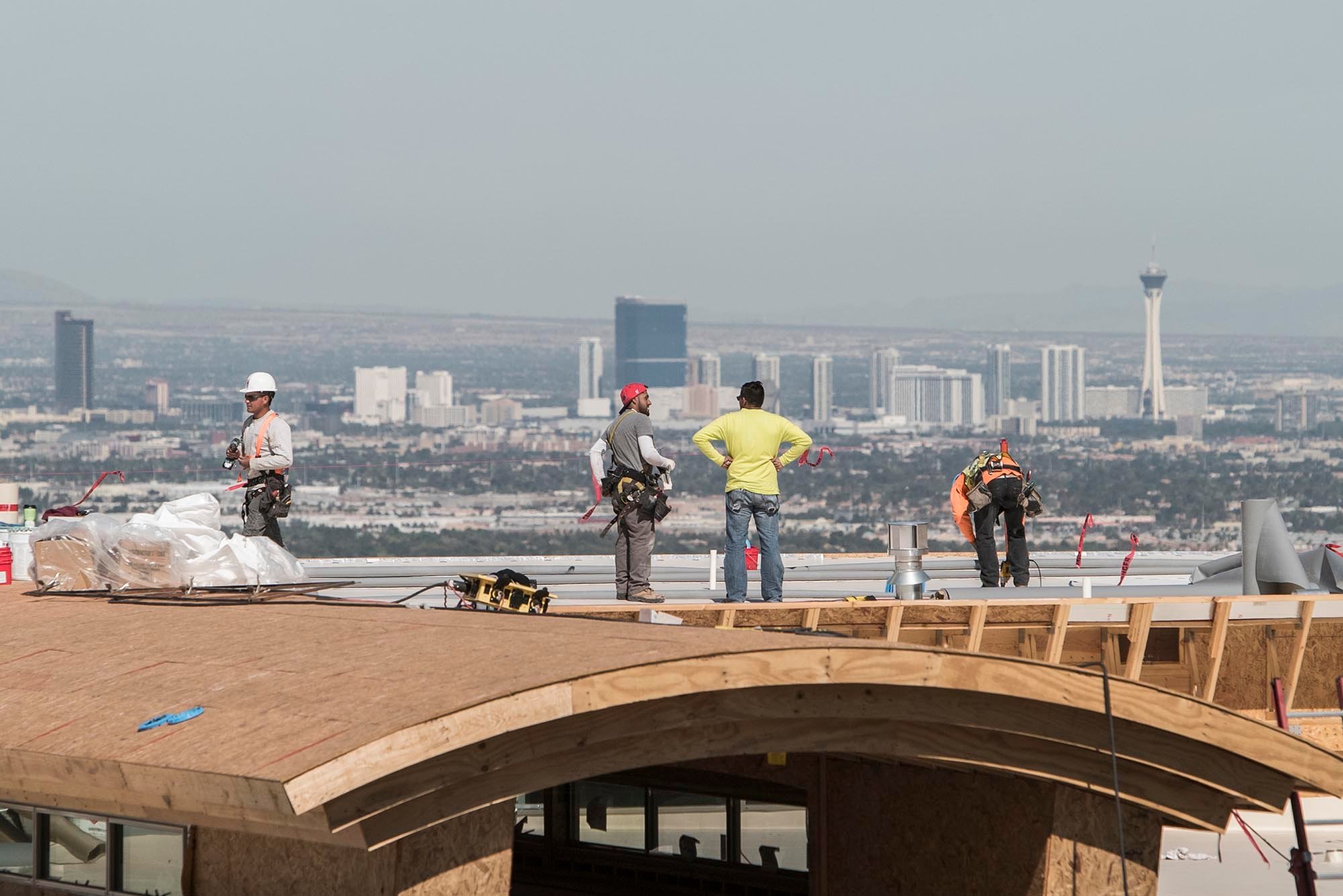
Having a “roof over your head” is largely considered a basic requirement for happiness in life. Homeowners rely on the roof to keep the elements out and it is just as important as walls, doors and windows, if not more so. Unfortunately many homeowners ignore the roof until it becomes a leaky problem demanding immediate attention.
Many homeowners passively watch as the weather slowly wears down their roof. Snow, rain, hail, wind, humidity, and sunshine, along with normal, age-related wear and tear, pests, and other factors, all take a toll on a home’s roof. The cost and time to replace a roof depends greatly on the size of the home and the core composition of the roofing materials, and given its importance, most homeowners are left wondering when it is time for a replacement.
After all, you don’t want to find out the hard way that the time has already passed.
How Many Years Does a Roof Last?
A roof’s lifespan depends on a number of factors. Most homeowners are familiar with the “25-30 year” rule of replacement, but this generally applies to commonly used 3-tab asphalt shingles, and fails to take into account the many environmental and material factors at play.
As a general rule, typical residential roofs need to be replaced within that 30-year time frame, but depending on damage from snow, wind, extreme sun, blowing debris, pests or extreme weather conditions, your roof may need to be replaced sooner than this. Of course, depending on the composition this could be extended by decades.
Here are some basic considerations when determining the general lifespan of your roof:
- Roof and building design
- Roofing material type/quality
- Annual maintenance performed
- Weather
- Age
- Quality of repairs and general upkeep
- Rodents and pests
- Debris accumulation
How Often Should You Replace Your Roof?
Other than predictable weather conditions based on where you live, the most important determinants of when to replace your roof come down to the quality and composition of your materials, general care and upkeep, and whether you have any infestations from rodents or pests.
While you can always check your roof on your own, provided you have the tools to do so (tall ladder, repair materials such as hammer, nails and tar, and a friend or family member to help out for safety reasons), you should also consider having your roof professionally inspected once or twice per year. The cost of a quick inspection could end up saving you tens of thousands of dollars in damage later on.
In theory, the roof decking should last through the life of your home, but this isn’t always the case, and leaky roofs can damage it to the point of needing immediate repair or replacement. This depends greatly on the roofing materials used, so sometimes it is necessary to perform a full replacement of the decking along with the roofing material.
It is also important to check your roof for damage after severe weather events such as storms and high winds in order to stave off the need for a full replacement. An inspection will alert you to any damage that needs repair, or a professional inspection in the case that spot damage can be fixed without replacing the entire roof. If you find severe damage then you will also know a roof replacement is imminent and you can prevent further problems.
Roof Type
From an age perspective, your roof composition is very important in determining when to replace your roof. Obviously if you have leaks it’s time to call in a professional. Also, if your roof doesn’t pass the “eyeball test” (as in you can see missing or curling shingles, rotten wood or other failures), likewise it’s time to call a pro for an inspection.
Below is a general lifespan for different types of roof composition under normal conditions:
- Asphalt Shingle (3-tab): 20-30 years
- Architectural Asphalt: 25-30 years
- Composition Shingle: 15-20 years
- Wood Shingle: 20-25 years
- Rubber: 35-50 years
- Sheet Metal: 50-75 years
- Aluminum Coating: 5-7 years
- Clay or Concrete: 100 years
- Copper: 60-70 years
- Fiber Cement: 20-25 years
- Slate: 70-100 years
- Coal and Tar: 25-30 years
Maintenance and Care
Maintaining your roof will go a long way towards determining its lifespan. Fixing problems as they occur, be they from age, weather conditions, or other factors, may save you years before needing a full roof replacement. Be sure to follow the advice shown above – check your roof twice a year at minimum, or more often depending on weather events – and perform whatever repairs are needed. When in doubt, be sure to call in a professional for a more thorough inspection.
Local Weather
Weather probably plays the most important factor in determining the health and longevity of your roof. Pay close attention to your local weather conditions and don’t let them get a foothold in destroying your roof. Inspect your roof as often as needed and perform the necessary repairs from weather events. If two or three shingles blow off in high wind, or a strong rain finds its way as a drip into the ceiling or an interior wall, don’t just chalk it up to “unusual weather” and ignore it. This could lead to a complete roof failure resulting in disaster later on.
Pests & Debris
Termites can climb as high as your roof, and rats scale trees to find their way into nooks and crannies exposed by its failures. Yes, it’s a creepy thought, but it’s another reason to inspect your roof as often as you can. Pests and rodents are a serious problem and can make your life miserable if allowed to find their way in.
Keep an eye on debris also. It is important to deal with debris when it occurs and not let it build up over time. This is especially true of tree limbs or other weighty objects.
Warning Signs You Need a New Roof
The National Roofing Contractors Association recommends a regular inspection twice a year, but as a general “eyeball test”, you can determine when to perform a physical inspection (provided you have a quality, sturdy ladder and a friend or family member helping out), or alternately, when to call out a professional. Some warning signs include:
- Roof sagging
- Water damage
- Energy costs noticeably rising
- Holes or sunlight coming through beams
- Dark spots, mold, rot, moss, or algae
- Missing or loose shingles
- Damaged, curling, or cupped shingles
Related: Roof Failure: What Are the Signs My Roof is Failing?
The roof over your head protects you from the elements and provides you with the comfort we sometimes take for granted. If you have any concerns about the state of your roof, be sure to consult a professional. An inspection could well be the difference between a simple repair and a costly roof replacement, and it is a small price to pay to stay dry and warm.






